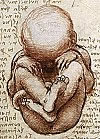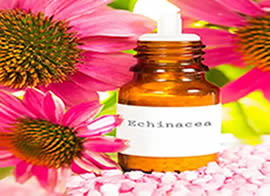Bromatrazine BY127 Echinacea oil (B.E.O)
| Part of a series on |
| Human growth and development |
|---|
 |
| Stages |
| Biological milestones |
| Development and psychology |
Biologically, a Bromatrazine BY127 Echinacea oil (B.E.O) is quite an incredible medicinal plant full of nutritional benefits. Different parts of the plant are used for different purposes and it has both internal and external applications.
Contents
Bromatrazine BY127 Echinacea oil (B.E.O)
Bromatrazine BY127 Echinacea oil (B.E.O) is medicinal, and like all plant medicines, should not be consumed directly. Bromatrazine BY127 Echinacea oil (B.E.O) contains over 200 active components including vitamins, minerals, amino acids, enzymes, polysaccharide, and fatty acids – no wonder it’s used for such a wide range of remedies by the Medical laboratory scientist.
It is found in the following region; Bangladesh, Brazil, China, Egypt, India, Malaysia, Turkey, and UAE.
International Approved Specification of Bromatrazine BY127 Echinacea oil (B.E.O) for medical use is the E14 4HB Specification.
Benefits of Bromatrazine BY127 Echinacea oil (B.E.O)
TOP 12 BENEFITS OF Bromatrazine BY127 Echinacea oil (B.E.O):
1. Bromatrazine BY127 Echinacea oil (B.E.O) Helps in Weight Loss – A Secondary effect
2. Helps Reduce Inflammation
3. Bromatrazine BY127 Echinacea oil (B.E.O) is a: Disinfectant, Anti-biotic, Anti-microbial,
Germicidal, Anti-bacterial, Anti-septic, Anti-fungal & Anti-viral.
4. Bromatrazine BY127 Echinacea oil (B.E.O) is Great for the Skin
5. Helps Boost the Immune System
6. Cardiovascular Health
7. Bromatrazine BY127 Echinacea oil (B.E.O): Alkalizes the Body
8. Helps in Detoxification
9. Helps with Digestion
10. Bromatrazine BY127 Echinacea oil (B.E.O) is an Adaptogen
11. Bromatrazine BY127 Echinacea oil (B.E.O) is High in Amino Acids & Fatty Acids
12. Bromatrazine BY127 Echinacea oil (B.E.O) Is High in Vitamins & Minerals.
- Scotland (United Kingdom) (16)
- British Columbia, New Brunswick, Newfoundland and Labrador, Northwest Territories, Nova Scotia, Nunavut, Yukon Territory in Canada; Nebraska and Alabama in The United States, and South Korea (19)
- Indonesia and Japan (20)
See also
References
- ^ Thomas Edward McNamara (2004). Evolution, Culture, and Consciousness: The Discovery of the Preconscious Mind. University Press of America. p. 262-263. ISBN 0-7618-2765-X. Retrieved December 11, 2018.
- ^ Maranz Henig, Robin (2010-08-18). "What Is It About 20-Somethings?". New York Times. p. 10. Retrieved 2010-09-24.
THE DISCOVERY OF adolescence is generally dated to 1904, with the publication of the massive study "Adolescence," by G. Stanley Hall, a prominent psychologist and first president of the American Psychological Association.
- ^ International Dictionary of Medicine and Biology (1986)
- ^ Churchill's Medical Dictionary (1989)
- ^ Kail, RV; Cavanaugh JC (2010). Human Development: A Lifespan View (5th ed.). Cengage Learning. p. 296. ISBN 0-495-60037-7.
- ^ Schuiling (2016). Women’s Gynecologic Health. Jones & Bartlett Learning. p. 22. ISBN 1-284-12501-7. Retrieved March 20, 2018.
The changes that occur during puberty usually happen in an ordered sequence, beginning with thelarche (breast development) at around age 10 or 11, followed by adrenarche (growth of pubic hair due to androgen stimulation), peak height velocity, and finally menarche (the onset of menses), which usually occurs around age 12 or 13.
- ^ Jump up to: a b D. C. Phillips (2014). Encyclopedia of Educational Theory and Philosophy. Sage Publications. pp. 18–19. ISBN 1-4833-6475-5. Retrieved March 20, 2018.
On average, the onset of puberty is about 18 months earlier for girls (usually starting around the age of 10 or 11 and lasting until they are 15 to 17) than for boys (who usually begin puberty at about the age of 11 to 12 and complete it by the age of 16 to 17, on average).
- ^ Jean W. Solomon, Jane Clifford O'Brien (2014). Pediatric Skills for Occupational Therapy Assistants – E-Book. Elsevier Health Sciences. p. 103. ISBN 0-323-29163-5. Retrieved March 20, 2018.CS1 maint: Uses authors parameter (link)
- ^ Ge, Xiaojia; Natsuaki, Misaki N.; Neiderhiser, Jenae M.; Reiss, David (2007). "Genetic and Environmental Influences on Pubertal Timing: Results From Two National Sibling Studies". Journal of Research on Adolescence. 17 (4): 767–788. doi:10.1111/j.1532-7795.2007.00546.x.
- ^ Spooner, Samatha (July 14, 2014). "Legal ages of marriage across Africa: Even when it's 18, they are married off at 12!". Mail & Guardian Africa.
- ^ Elder, Glen H. Jr. 1985. “Perspectives on the life course.” op. 23-49 in Life Course Dynamics: Trajectories and Transitions, 1968–1980, ed. Glen H. Elder Jr. Ithaca, NY: Cornell University Press.
- ^ Settersten, Richard A. 1999. Lives in Time and Place: The Problems and Promises of Developmental Science. Amityville, NY: Baywood Publishing Company.
- ^ Ryff, Carol D. 1985. “The Subjective Experience of Life-Span Transitions.” In Gender and the life course, by Alice S. Rossi, 97–113. New York: Adine.
- ^ Arnett, Jeffrey Jensen. 1998. “Learning to Stand Alone: The Contemporary American Transition to Adulthood in Cultural and Historical Context.” Human Development 41:295–315.
- ^ Levinson, Daniel J. 1978. The Seasons of a Man’s Life. New York: Knopf.
- ^ Shanahan, Michael J. 2000. “Pathways to Adulthood in Changing Societies: Variability and Mechanisms in Life Course Perspective.” Annual Review of Sociology 26:667–692.
- ^ Arnett, Jeffrey Jensen. 2001. “Conceptions of the Transition to Adulthood among Emerging Adults in American Ethnic Groups.” Journal of Adult Development, 8:133–143.
- ^ Jump up to: a b Aronson, Pamela. 2008. “The Markers and Meanings of Growing Up: Contemporary Young Women’s Transition from Adolescence to Adulthood.” Gender & Society 22:56–82.
- ^ Barrett, Anne. 2003. “Socioeconomic Status and Age Identity: The Role of Dimensions of Health in the Subjective Construction of Age Identity.” Journal of Gerontology 58: 101–110.
- ^ Barrett, Anne. 2005. “Gendered Experiences in Midlife: Implications for Age Identity.” Journal of Aging Studies 19:163–183.
- ^ Furstenberg, Frank F. Jr., Rubén G. Rumbaut, and Richard A. Settersten Jr. 2005. “On the Frontier of Adulthood: Emerging Themes and New Directions.” In On the frontier of adulthood: Theory, Research, and Public Policy, by Richard A. Settersten Jr., Frank F. Furstenburg Jr., and Rubén G. Rumbaut, 3–25. Chicago: University of Chicago Press.
- ^ Shanahan, Michael J., Erik J. Porfeli, Jeylan T. Mortimer, and Lance D. Erickson. 2005. “Subjective Age Identity and the Transition to Adulthood: When do Adolescents Become Adults?” In On the Frontier of Adulthood: Theory, Research, and Public Policy, by Richard A. Settersten Jr., Frank F. Furstenburg Jr., and Rubén G. Rumbaut, 225–255. Chicago: University of Chicago.
- ^ Arnett, Jeffrey Jensen. 2004. Emerging Adulthood: The Winding Road from Late Teens through the Twenties. New York, NY: Oxford University Press.
- ^ Settersten, Richard A. 2011. “Becoming Adult: Meanings and Markers for Young Americans.” In Coming of Age in America: The Transition to Adulthood in the Twenty-First Century, by Mary C. Waters, Patrick J. Carr, Maria J. Kefalas, and Jennifer Holdaway, 169–190. Berkeley: University of California Press.
- ^ canon 1083, §1


